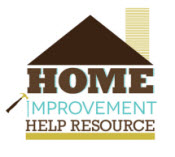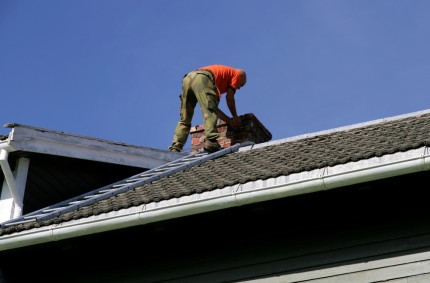Your roof needs repairs and you’re ready to call a roofing company. You hope to find one that’s affordable and that does quick work, but there’s so much more to consider. How a roofing company’s employees approach roofing safety should be a major consideration when hiring a roofing contractor.
A safe roofing company projects an image of professionalism and competence. On the other hand, a lack of safety practices is a sure sign of a careless roofing company who will probably do a mediocre job with your roof repairs. As you look for a roofing company, ask them about their safety practices. Choose a company that follows these safety guidelines.
- Training is a priority. Ask the roofing company about the training procedures they offer. All employees should be trained in proper safety measures. Generally, companies with permanent employees are well-versed in safety practices than companies who hire contract workers and short-term employees.
- Teamwork is paramount. Good roofers know that they should never work alone. As a team, each member looks out for each other. The company should send enough roofers to handle the job; one employee is not enough to get any job done safely.
- Proper equipment is worn. If you’ve ever done your own roof work, you probably didn’t wear much safety equipment. But professional roofers don’t take any chances. Proper crews wear eye protection, work gloves, and non-slip work boots, amongst other protection, when getting the job done. Safety harnesses are another important part of a roofing contractor’s uniform. Any roofers working on a roof over ten feet high is required by law to use a harness—but many do not. Ask the roofing contractors whether they use safety harnesses before you hire them.
- Weather is considered. Extreme wind, rain, snow, or ice can endanger workers. Plus, very hot or cold temperatures can damage shingles and sealant. An unsafe roofing company will do the roofing work, rain or shine, while a safe roofing company may reschedule the roofing job if there is inclement weather. While this may seem inconvenient to you, it protects the roofers from injury and ensures they can do their job properly.
- Tools and parts are of high quality. Roofs with extreme pitch require a bit of extra support. Toeholds are pieces of lumber installed so roofers have somewhere to step and a lower likelihood of falling. These are typically placed on the roof with roof brackets. If your roof has a steep slope, make sure your chosen roofing company will use toeholds and brackets.
- Ladders are used safely. Poor ladder safety practice can spell disaster for roofing companies. To ensure there are no ladder accidents, roofing employees should use a ladder with anti-slip safety shoes, place the ladder on even ground, and attach the ladder to the ground with stakes and attach it to the roof with roof anchors.
- Medical hazards are avoided. Besides safety dangers, professional roofing companies should also guard against various medical dangers to their employees.
Heat Stroke: In the summer, roofers can be exposed to high temperatures and direct sun exposure, which could cause illness and fatigue. They should drink plenty of water and take regular breaks to prevent heat stroke.
Bronchitis and Emphysema: When removing roofing materials, roofers often expose themselves to dust or fumes, which can enter the lungs. Chronic bronchitis is characterized by a persistent cough, while emphysema involves lung damage and thus shortness of breath. Roofing companies must analyze conditions before proceeding. Employees can also wear face masks to guard against dust.
Hand/Arm Vibration: When roofers regularly use power tools, they may experience hand-arm vibration, with symptoms such as numbness and tingling in the fingertips and loss of finger dexterity. They can also experience carpal tunnel syndrome, which involves numbness or tingling in the hand and wrist. Employers should train employees about the risks. Employees should rotate job tasks throughout the day and use tools with the least vibration possible to avoid these outcomes.
Back Ynjury: Roofing companies should teach their employees to lift safely. When possible, roofers should bend and straighten their legs to lift rather than bending over.
Hypothermia and frostbite: When roofers work in freezing temperatures, they risk illnesses such as hypothermia, an extreme lowering of body temperature, or frostbite, which causes frozen skin and tissue. Roofers should wear warm clothing and protective equipment. In very extreme temperatures, they should delay their work.
8. Insurance covers damages. Make sure to choose a company that is covered by insurance, in case an accident occurs. If they’re not covered, you may be held responsible for medical costs. Before signing a contract, look over the details of the company’s insurance policy and make sure there is adequate coverage. You’ll also want to make sure they’re certified by the Workplace Safety and Insurance Board, ensuring they meet safety standards.
Call your local roofing company for more information on roof safety and repair.




